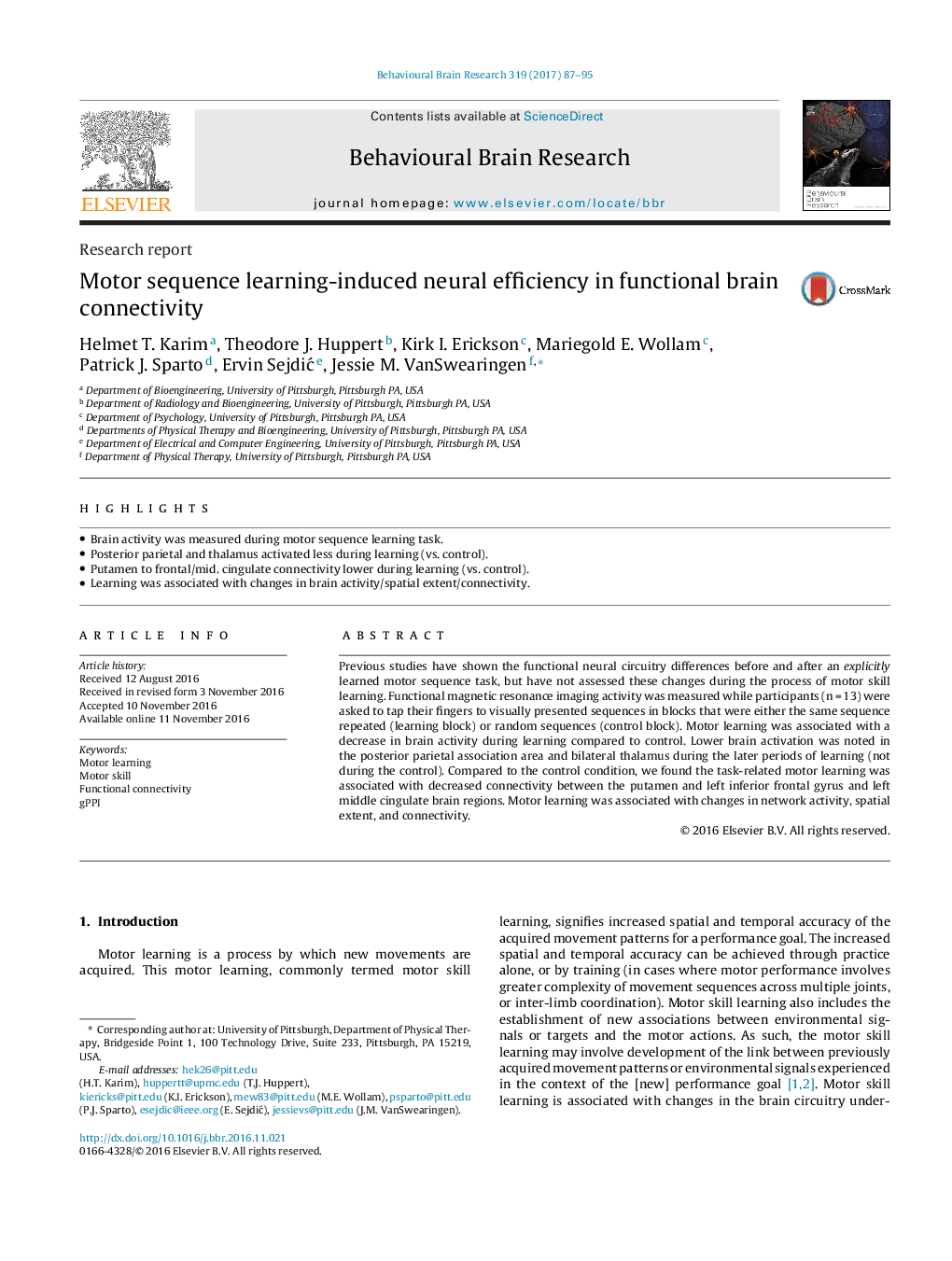| Article ID | Journal | Published Year | Pages | File Type |
|---|---|---|---|---|
| 5735293 | Behavioural Brain Research | 2017 | 9 Pages |
â¢Brain activity was measured during motor sequence learning task.â¢Posterior parietal and thalamus activated less during learning (vs. control).â¢Putamen to frontal/mid. cingulate connectivity lower during learning (vs. control).â¢Learning was associated with changes in brain activity/spatial extent/connectivity.
Previous studies have shown the functional neural circuitry differences before and after an explicitly learned motor sequence task, but have not assessed these changes during the process of motor skill learning. Functional magnetic resonance imaging activity was measured while participants (n = 13) were asked to tap their fingers to visually presented sequences in blocks that were either the same sequence repeated (learning block) or random sequences (control block). Motor learning was associated with a decrease in brain activity during learning compared to control. Lower brain activation was noted in the posterior parietal association area and bilateral thalamus during the later periods of learning (not during the control). Compared to the control condition, we found the task-related motor learning was associated with decreased connectivity between the putamen and left inferior frontal gyrus and left middle cingulate brain regions. Motor learning was associated with changes in network activity, spatial extent, and connectivity.
